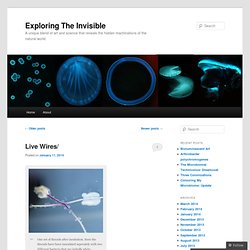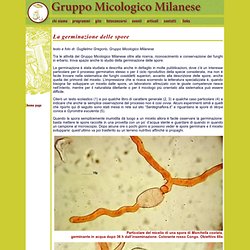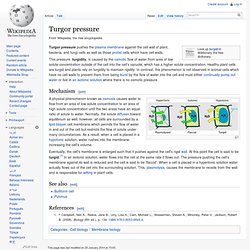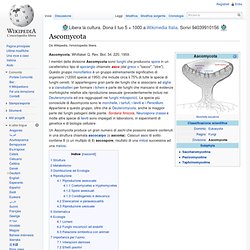

Projects. A unique blend of art and science that reveals the hidden machinations of the natural world. One set of threads after incubation.

Here the threads have been inoculated seperately with two different bacteria that are initially white. However, when these two strains are allowed to mix with each other and communicate, they produce a purple pigment.This is clearly visible at the junction or node where the two species have mixed and are communicating with one another One set of threads after incubation. One thread was inoculated with a purple pigmented bacterium and the other with a red one. I like the way that purple has beaten red to the junction and prevented it travelling any further. The threads just after inoculation. Three days incubation. Red/Purple Three days incubation The bacteria following threads laid out in quite complex patterns I first saw hints of this phenomenon a few years ago when I was growing bacteria on textiles for a collborative art project with Anna Dumitriu but have only now started to explore it further.
Algal thread preparation Culture of the algal threads. Mycelium. Cultivation. Forum sui Funghi da coltivare. Mushroom Vaults : Cultivation Tips. La germinazione delle spore. La germinazione delle spore testo e foto dr.

Guglielmo Gregorio, Gruppo Micologico Milanese Tra le attività del Gruppo Micologico Milanese oltre alla ricerca, riconoscimento e conservazione dei funghi in erbario, trova spazio anche lo studio della germinazione delle spore. La germinazione è stata studiata e descritta anche in dettaglio in molte pubblicazioni, dove c’è un interesse particolare per il processo germinativo stesso o per il ciclo riproduttivo della specie considerata, ma non è facile trovare nella sistematica dei funghi cosiddetti superiori, accanto alla descrizione delle spore, anche quella dei primordi del micelio.
L’impressione che si ricava scorrendo la letteratura specializzata è, quando bisogna far sviluppare un micelio dalle spore, un laboratorio attrezzato con le giuste competenze riesce nell’intento, mentre per il naturalista dilettante o per il micologo più orientato alla sistematica può essere difficile. Sporata di Oudemansiella longipes su gel di Agar.
Turgor pressure. Turgor pressure pushes the plasma membrane against the cell wall of plant, bacteria, and fungi cells as well as those protist cells which have cell walls.

This pressure, turgidity, is caused by the osmotic flow of water from area of low solute concentration outside of the cell into the cell's vacuole, which has a higher solute concentration. Healthy plant cells are turgid and plants rely on turgidity to maintain rigidity. In contrast, this phenomenon is not observed in animal cells which have no cell walls to prevent them from being burst by the flow of water into the cell and must either continually pump out water or live in an isotonic solution where there is no osmotic pressure. Cords_strands_rizomorphs. Mold. Mold growth covering a decaying peach.

The frames were taken approximately 12 hours apart over a period of six days. Spinellus fusiger growing on fungi Moldy tomatoes A mold (US) or mould (UK / NZ / AU / CA) is a fungus that grows in the form of multicellular filaments called hyphae.[1][2] In contrast, fungi that can adopt a single celled growth habit are called yeasts. Molds are a large and taxonomically diverse number of fungal species where the growth of hyphae results in discoloration and a fuzzy appearance, especially on food.[3] The network of these tubular branching hyphae, called a mycelium, is considered a single organism. Molds cause biodegradation of natural materials, which can be unwanted when it becomes food spoilage or damage to property. Biology[edit] Molds reproduce by producing large numbers of small spores,[6] which may contain a single nucleus or be multinucleate. Common molds[edit] Food production[edit] The Kōji (麹?) Ascomycota. Da Wikipedia, l'enciclopedia libera.

Ascomycota, Whittaker Q. Rev. Biol. 34: 220, 1959. Un Ascomycota produce un gran numero di aschi che possono essere contenuti in una struttura chiamata ascocarpo (o ascoma). Ciascun asco di solito contiene 8 (o un multiplo di 8) ascospore, risultato di una mitosi successiva ad una meiosi. Struttura[modifica | modifica sorgente] Molti Ascomycota sono costituiti da ife, sottili filamenti di cellule spesso con uno spessore di solo 5 µm, che si diramano ripetutamente fino a formare un intricato gomitolo, il micelio. All'altro estremo della divisione Ascomycota ci sono i lieviti unicellulari che il più delle volte sono visibili solo al microscopio. Anche l'ascocarpo può essere di diverso tipo: [modifica | modifica sorgente] Come molti funghi gli Ascomycota si nutrono principalmente di biomassa viva o morta.
Distribuzione ed Ecologia[modifica | modifica sorgente] Hypomyces completus in coltura.
David Moore's World of Fungi: where mycology starts. Blogs. Growth. Mycologia. Papers. Institution and opportunities. Buisness. Mushroom Business Information Center - Mushroom Business.